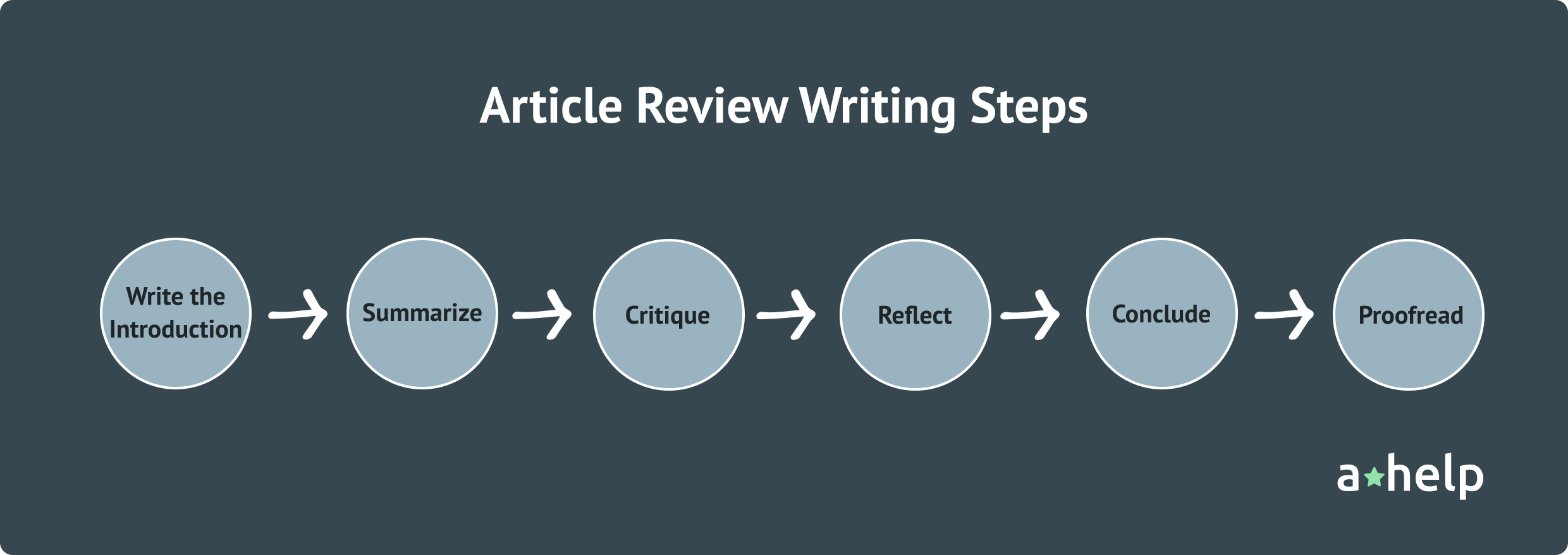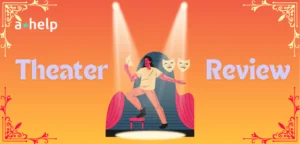Ah, the life of a student: an endless whirlpool of reading and writing. You read essays to write essays. You critique critiques to understand critiquing. And among the mountains of textbooks, novels, movies, and whatnot, you also deal with the beast known as the article review. Get ready, learners and midnight oil burners, as we decode the hieroglyphs of writing article reviews in this guide.

✅ AI Essay Writer ✅ AI Detector ✅ Plagchecker ✅ Paraphraser
✅ Summarizer ✅ Citation Generator
What is an Article Review?
An article review is your chance to wear the critic’s hat and write about another writer’s writing—very meta, isn’t it? It involves summarizing, analyzing, and sometimes evaluating a piece of writing which, in this context, is usually an academic article.

Through this task, you aren’t repeating what’s already been said. You engage with a paper critically by identifying strengths, weaknesses, and pivotal points. This task sharpens analytical skills, promotes critical thinking, and, let’s be honest, it fills out that word count nicely.
Types of Article Reviews
Speaking of article reviews, you’ll discover an assortment of types, each fitting a different scholarly or educational purpose. To keep our guide focused and practical, especially for students, we’ll concentrate on the three most commonly assigned types in academic settings: research article reviews, science article reviews, and journal article reviews. Let’s see what each means and how they differ in focus and methodology.
🕵🏻♂️ Research Article Reviews
In a research article review, the spotlight is on the sophistication of the research process itself. Your mission is to critically evaluate the researcher’s work. This involves a detailed examination of the study’s methodology, the validity of the data, and the robustness of the conclusions. Here’s what you specifically look into:
| Methodology | Data Analysis |
| Assess whether the research methods used were appropriate for the study’s goals. Were the experimental design and data collection methods up to snuff? | Scrutinize how the data were analyzed. Were the techniques suitable? Did the analysis provide clear support for the conclusions drawn? |
| Findings | Implications |
| Evaluate the significance and reliability of the research findings. Are the results compelling and well-supported by the data? | Consider the practical implications of the research. Does the study contribute valuable insights to its field? What are the potential applications or consequences? |
👨🏻🔬 Science Article Reviews
Science article reviews demand a precise and analytical approach. These reviews focus on empirical and experimental reports in the sciences and require a clear understanding of the scientific method and principles underpinning the study. Here’s what tackling a science article review typically involves:
| Experimental Setup | Clarity of Presentation |
| Is the experimental design sound and reproducible? Assess the clarity and appropriateness of the experimental methods and controls. | Are the results presented in a clear, systematic way? Is the discussion coherent, and does it logically follow from the results? |
| Scientific Accuracy | Broader Impact |
| Evaluate the accuracy and relevance of the scientific arguments and conclusions. Are they supported by the data? | Discuss the contribution of the article to its field. Does it advance knowledge, methods, or understanding? |
Science article reviews are critical for developing a keen eye for detail and a robust understanding of how scientific discoveries are reported and interpreted.
📝 Journal Article Reviews
Journal article reviews are broader and can cover a range of disciplines, from humanities to the hard sciences. These reviews often involve a more exhaustive assessment of the article’s contribution to the larger body of knowledge. Key aspects to focus on include:
| Contextual Analysis | Theoretical Framework |
| How does the article fit within the broader discourse of the field? Does it address an important gap? | Analyze the theoretical underpinnings of the article. Are the theories sound and well-applied? |
| Contribution to Scholarship | Critique of Arguments |
| What new insights or perspectives does the article offer? Is it a significant advancement, or does it reiterate known information? | Evaluate the strength and consistency of the article’s arguments. Are the conclusions justified by the evidence presented? |
Working with journal articles through planning and writing reviews sharpens your skills in critical reading and provides a platform for moving on to ongoing scholarly debates.
The Structure of an Article Review
Now that we’ve explored the various types of articles students may deal with and the distinct objectives these reviews aim to achieve, it’s important to zoom in further and understand the framework of a typical article review. Understanding this structure will enable you to craft insightful and well-organized reviews. Let’s take a look at the anatomy of an article review, outlining its essential components and the proportion of space each should occupy in your final document.




Each component is compulsory, and omitting any one of them will compromise the integrity of the entire review. Together, these elements form a cohesive whole, where each part builds upon and complements the others, thereby providing a comprehensive and critical evaluation of the article. You might as well complete it with our proofreading service.
How to Write an Article Review
Writing an article review is a structured process that requires careful attention to detail and a systematic approach to critiquing scholarly work. Following this step-by-step guide will help you build a complete and thoughtful article review.
Write the Introduction
Begin your review with an interesting hook to capture the reader’s attention—this could be a surprising statistic, a poignant quote, or a provocative question related to the topic. Introduce the article by mentioning its title, author(s), and the journal or publication context. Briefly summarize the main argument or purpose of the article as presented by the author. Conclude the introduction with your own thesis statement that reflects your overall evaluation and what the review will focus on. This setup informs the reader about what to expect framing your perspective right from the start.
Summarize the Article
In this section, provide a clear and concise summary of the article. Focus on the primary arguments or findings without incorporating your personal opinions. Highlight essential details such as key statistics, notable examples, and important methodological aspects that underpin the author’s thesis. This summary should give your readers a well-rounded understanding of the article’s content and the organizational structure supporting the author’s thesis.
Critique the Article
The critique is the core of your review, where you critically look at the article. Begin by evaluating the research methodology to see if it supports the author’s claims effectively. Discuss the strengths and weaknesses of the arguments, noting any logical fallacies or biases that may affect the conclusions. Examine the evidence presented to determine if it is appropriate and sufficient to back up the claims. Conclude this section by assessing the article’s impact and relevance in its field, considering both its theoretical and empirical contributions.

Reflect on the Implications
Reflect on the broader implications of the article’s findings. Consider how these contributions affect the existing body of knowledge in the field. You might compare the article’s conclusions with those of other studies to highlight unique insights or significant discrepancies. Discuss the theoretical frameworks and practical applications of the research, indicating how these elements advance understanding or application within the discipline.
Conclude the Review
Summarize the main points of your critique in the conclusion, reaffirming your idea in light of the analysis you’ve provided. This synthesis helps reinforce the critical perspectives you’ve shared throughout the review. Optionally, you might suggest directions for further research or pose open questions that the article leaves unanswered.
Proofread and Finalize
Finalize your review by thoroughly checking for grammatical or stylistic errors with an academic proofreading service. Check that the review logically flows from the introduction through to the conclusion, with a consistent progression of ideas. Make any final adjustments needed to strengthen your arguments, clarify points, or enhance the overall structure of the review.
FAQ
Follow us on Reddit for more insights and updates.



Comments (0)
Welcome to A*Help comments!
We’re all about debate and discussion at A*Help.
We value the diverse opinions of users, so you may find points of view that you don’t agree with. And that’s cool. However, there are certain things we’re not OK with: attempts to manipulate our data in any way, for example, or the posting of discriminative, offensive, hateful, or disparaging material.